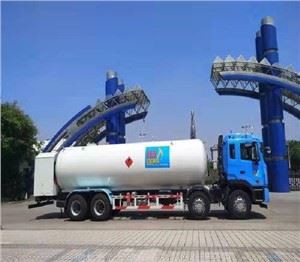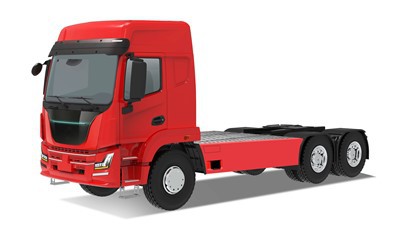Understanding Jet Fuel Trucks: The Essential Guide

Jet fuel trucks play a crucial role in the aviation industry by transporting and delivering jet fuel to airports and aircraft. These specialized vehicles ensure that planes are adequately fueled for safe takeoff, and their efficient operation is vital for maintaining flight schedules and safety. In this comprehensive guide, we will explore the different types of jet fuel trucks, their components, safety regulations, operational guidelines, maintenance practices, and more. This article aims to provide a thorough understanding of jet fuel trucks, making it a valuable resource for professionals and enthusiasts alike.
What is a Jet Fuel Truck?
A jet fuel truck, often referred to as a fuel service truck, is a specialized vehicle used for the transportation and dispensing of aviation fuels such as Jet A and Jet A-1. These trucks are designed to meet the specific requirements of fueling aircraft and are equipped with safety features to prevent spills and accidents.
Types of Jet Fuel Trucks
There are several types of jet fuel trucks, each designed for specific purposes:
1. Standard Jet Fuel Truck
The standard jet fuel truck typically carries a large tank capable of holding thousands of gallons of fuel. It is equipped with a pump and dispensing nozzle, allowing for quick refueling of aircraft.
2. Refueler Truck
Refueler trucks are specifically designed to deliver jet fuel directly to the aircraft on the tarmac. They are often used at airports and come with various features such as adjustable height nozzles and hose reels for ease of access.
3. Portable Fuel Tanker
Portable fuel tankers are smaller and more maneuverable than standard fuel trucks. They are often used in remote locations or smaller airfields where larger trucks may not be practical.
Components of a Jet Fuel Truck
Understanding the components of a jet fuel truck is essential for appreciating how they operate:
Fuel Tank
The fuel tank is the primary storage component of a jet fuel truck. It is typically made of aluminum or steel and is designed to withstand the corrosive properties of aviation fuel. It is important for the fuel tank to have a capacity that can meet the demands of the airport served.
Pumping and Dispensing System
The pumping and dispensing system is responsible for transferring fuel from the tank to the aircraft. This system includes:
- Fuel Pump: Moves fuel from the tank through the hose to the aircraft.
- Hoses: Flexible tubes that carry fuel to the dispensing nozzle.
- Dispensing Nozzle: Connects to the aircraft fuel inlet and allows for controlled dispensing.
Filters and Monitoring Systems
Filtration systems remove contaminants from the fuel before dispensing it into the aircraft. Monitoring systems often include meters to track fuel volume and flow rates.
Safety Regulations for Jet Fuel Trucks
The aviation industry is heavily regulated, and jet fuel trucks must adhere to strict safety standards. Here are some key safety regulations:
1. OSHA Regulations
The Occupational Safety and Health Administration (OSHA) mandates that all fueling operations comply with safety standards to protect workers from hazardous materials.

2. NFPA Standards

The National Fire Protection Association (NFPA) provides guidelines on fueling operations and the design of refueling equipment, ensuring that facilities operate safely and reduce fire risks.
3. Environmental Protection Standards
Environmental regulations require that any spills or leaks are immediately contained and reported to minimize ecological damage.
Operational Guidelines for Jet Fuel Trucks
To ensure safe and efficient operations, jet fuel trucks must follow specific conduct guidelines:
1. Pre-Operational Checks
Before operating a jet fuel truck, operators should conduct thorough pre-operational checks, including:
- Inspecting the fuel tank for leaks or damage.
- Checking the integrity of hoses and nozzles.
- Ensuring all safety equipment is functional.
2. Fueling Procedures
When fueling an aircraft, the following procedures should be observed:
- Position the truck close to the aircraft, avoiding any obstructions.
- Ground both the truck and the aircraft to prevent static electricity build-up.
- Monitor fuel flow and adjust as necessary to prevent overfilling.
3. Emergency Response
All personnel involved in fueling operations must be trained in emergency response, including:
- Identifying potential hazards.
- Implementing spill response procedures.
- Using fire suppression equipment if necessary.
Maintenance of Jet Fuel Trucks
Proper maintenance of jet fuel trucks is critical to ensuring reliability and safety. Here are key maintenance practices:

1. Routine Inspections
Perform regular inspections of truck components, including:
- Fuel tank integrity.
- Pumping and dispensing systems.
- Electrical systems and lights.
2. Fuel Quality Testing
Regularly test the quality of the fuel to ensure it meets specifications and is free from contaminants. This ensures safe operations and protects aircraft systems.
3. Repairs and Upgrades
Any identified issues must be promptly addressed, and upgrades to comply with changing regulations should be implemented.
Benefits of Using Jet Fuel Trucks
Jet fuel trucks offer numerous advantages, including:
1. Flexibility
These trucks can access various locations on an airport tarmac, making them essential for remote and rapidly changing operational environments.
2. Efficiency
Jet fuel trucks allow for quick refueling, minimizing downtime for aircraft and ensuring timely departures.
3. Cost-Effectiveness
By delivering fuel directly to aircraft, jet fuel trucks reduce the need for static fuel tanks, lowering overall operational costs.
Practical Examples and Tips for Jet Fuel Truck Operation
| Scenario | Tip |
|---|---|
| Refueling Compact Aircraft | Utilize a smaller refueler truck to navigate tightly spaced hangars. |
| High Volume Refueling | Employ two trucks simultaneously to reduce aircraft downtime. |
| Remote Airstrips | Use portable tankers equipped for off-road driving. |
| Winter Operations | Ensure that anti-freezing agents are included in the fuel mix if required. |
FAQs about Jet Fuel Trucks
1. What types of fuel do jet fuel trucks transport?
Jet fuel trucks primarily transport Jet A and Jet A-1 fuels, which are used in commercial and military aircraft.
2. How often should the maintenance of jet fuel trucks be performed?
Routine maintenance checks should occur at least monthly, with more detailed inspections performed quarterly or according to manufacturer guidelines.
3. Are there specific training requirements for operating jet fuel trucks?
Yes, operators must undergo training that includes safety procedures, emergency response, and equipment handling metrics.
4. Can jet fuel trucks operate in extreme weather conditions?
Yes, but precautions must be taken, such as using anti-freezing agents in cold conditions and ensuring proper drainage in heavy rain to prevent spills.
5. What safety equipment is required on a jet fuel truck?
Safety equipment typically includes fire extinguishers, spill containment kits, safety goggles, and ear protection.
6. How can I ensure the fuel quality when using a jet fuel truck?
Perform regular quality tests, ensure proper filtration systems are in place, and follow strict protocols for fuel handling and storage.
